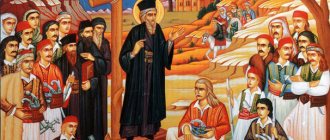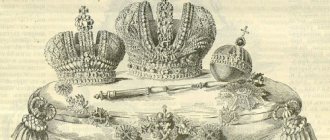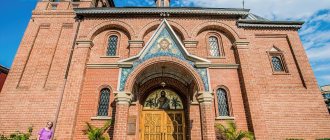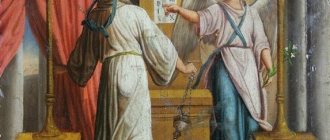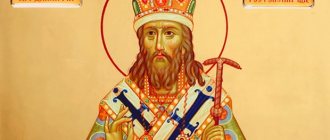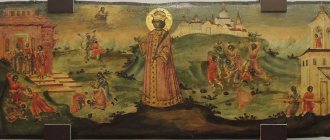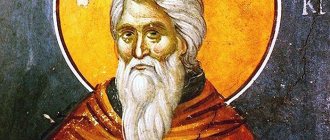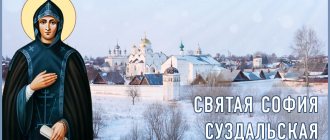For canonization
Supporters of the canonization of John IV are some Russian monarchists who see in the figure of the tsar their ideal of absolute power, advocating for the good of the state.
Indeed, during the reign of Ivan the Terrible, the borders of our country were significantly expanded, the transition from Rus' to Russia was completed, and the Astrakhan and Kazan khanates became part of a single empire. Even in the division of the state into Oprichnina and Zemshchina, monarchists see a prototype of the future division of powers between the branches of government.
Supporters of the canonization of Ivan IV consider numerous historical evidence of the tsar’s brutal massacres of people he disliked to be insinuations fabricated during the reign of the Romanov dynasty, whose representatives occupied the Russian throne after the Time of Troubles.
Ivan the Terrible is also credited with the fact that during his reign more than 60 monasteries were founded in Russia, over 40 stone churches were built, church councils were convened, and Orthodox literature was published. And besides this, cities were founded, fortresses were erected, and the country’s infrastructure developed.
Metropolitan of St. Petersburg and Ladoga John (Snychev), in his book “Autocracy of the Spirit,” published in 1995, wrote that before the 1917 revolution, ordinary Russian people revered the Terrible Tsar as a saint. They came to his tomb in the Moscow Kremlin with their requests. It was believed that the late sovereign was helping believers in litigation.
Supporters of the canonization of John IV also claim that the collections of the Holy Synod preserved a list of ascetics whom the leadership of the Russian Orthodox Church planned to canonize at the Local Council in 1917, but this was prevented by the revolutionary transformations that took place in our country. Allegedly, the writer Alexander Nikolaevich Strizhev stated that he saw the name of Ivan the Terrible in this document. The Tsar was on the same list with Xenia of Petersburg, Philaret of Moscow and John of Kronstadt.
However, none of the historical researchers saw this document again.
“Only unlimited Autocratic, Unique Power is God-pleasing Power in Russia.” Autocratic power is of divine origin.
The writer Alexander Nikolaevich Strizhev reported that when he worked in the manuscript department of GBL32 with documents from the funds of the Holy Synod of the tenth years of the twentieth century - before the Council of 1917-1918, he discovered there a list of devotees of piety for whose canonization the Synod was preparing. There were Blessed Xenia of Petersburg, and Saint Ignatius Brianchaninov, and Saint Theophan the Recluse, and Saint Philaret of Moscow, and Righteous John of Kronstadt, and ... Tsar John Vasilyevich the Terrible. In total, there were more than 25 names on the list. Naturally, it is impossible to discern any “politics” in the decision of the Holy Governing Synod. In the early nineties of the last century, the spirit of people’s love for the Terrible Tsar was revived, and there is no “politics” in this either. (Leonid Bolotin. What is the deacon of “all Rus'” against the Royal Abbot of the Russian Land? - Moscow, December 19-20, 2002 AD.
________________
The Empress is the initiator of the all-Russian glorification of Emperor Paul the First
and Tsar Ivan the Terrible
In one of his emigrant articles, the head of the Main Directorate for Police Affairs of the Provisional Government, S.G. Svatikov recalled the words of Grand Duchess Maria Georgievna (1876†1940), spoken by her shortly after the February coup of 1917:
“The Empress [Alexandra Feodorovna] accepted with all her soul the canons [and dogmas] ... of Orthodoxy. She was deeply imbued with the principles of Autocracy and Nationality. She read a lot on the history of Russia of the 16th and 17th centuries, and Russia appeared to Her in the image of Muscovite Rus', with its endless devotion to the Tsar, with its faith in the Tsarist Autocracy, rising above all estates and classes and most of all devoting itself to serving the common people. […]
The ideal of the Empress was a Tsar who loved the people; as they would say now, Tsar-Democrat, but I hate this word, which is used to justify so many crimes. The Empress believed that the Tsar-Lover of the People, who fell victim to his love for the peasantry, ... The Tsar-Great Martyr, worthy of being considered one of the official saints of the Orthodox Church, was Emperor Paul the First. The Empress was the main initiator of the cult of Emperor Pavel Petrovich, which began before the war.
All who love the Empress followed Her in glorifying the untimely death of the Monarch. At the tomb of Emperor Paul, to the left of the altar, a massive silver candlestick with a flaming forest of thin wax candles was placed. Prayers were constantly served in front of the tomb; at the request of the believers, the name of the Most August deceased was constantly commemorated. The clergy of the church was doubled in order to have time to perform the constantly ordered services. Agree that the initiative of the Empress, which was discussed in a low voice, found a warm response among believers who, together with Empress Alexandra Feodorovna, considered the “peasant Tsar” and the great martyr killed for the people, Paul the First, who was usually portrayed as a tyrant and a madman for His murderer.
It was she, the Empress, who took the initiative for the [all-Russian] glorification and, if possible, canonization of another, in her opinion, Tsar-Great Martyr and Lover of the People, namely John IV, whom the Empress did not like to call “The Terrible.” This cult developed in Moscow at the tomb of Tsar John IV much more slowly than the cult of Paul the First in the Peter and Paul Cathedral. And the Empress considered Him a “martyr-lover of the people,” a victim of boyar slander. [Ioann Vasilyevich, having become the first Russian Anointed of God, the Russian Tsar-Guardian of the Throne of David, revealed the doctrine of the symphony of spiritual and secular authorities (the Priesthood and the State Apparatus) in its entirety. With this, the holy King exposed the heresy of papism and the heresy of kingship in full. For this reason, the thieves of the Royal power, both from the Priesthood (heretic papists) and from the Kingdom (heretics-king-fighters) hate the holy King John with fierce hatred. For in His Great State Seal they are shown the corresponding place in the hierarchy of power, which shows the failure of their power-hungry dreams. That is why they pour out streams of lies on this Terrible shepherd and defender of the people of God, Jacob, and the earthly Church - the heritage of God, Israel (Ps. 77:71).
In addition, in the calendar of the Koryazhsky Monastery of the early 17th century, the name of the Great Martyr John Vasilyevich is indicated, and on the fresco icon (letters from the 17th century and updated by order of Emperor Alexander III in 1882) in the Faceted Chamber of the Moscow Kremlin we read the following inscription: “Blessed and Christ-loving, God-crowned Great Sovereign Tsar and Grand Duke Ioann Vasilievich, All Great Russia, Sovereign and Autocrat of many states.” So, “there is indisputable documentary evidence that the holiness of Tsar Ivan the Terrible was recognized by the Church at least three hundred years ago and confirmed by outstanding Russian theologians of the early 20th century”[520].]
You find that the Empress was wrong in choosing those whom She considered great martyrs, sufferers for the people... But I am not saying that She is objectively right. [And we, Orthodox Christians of pre-Antichrist times, believe that Empress Alexandra Feodorovna was absolutely right, for She was one in the Spirit of Christ with Her God-chosen Russian people!] I only say that She was infinitely sincere in Her love for the Russian people. Living outside of real life, in the ideas and ideas of Rus' of the 16th and 17th centuries, She believed in the love of the Russian people for their Tsar, believed in the historically established foundations of Russian life.
You will say that Russia in 1917, that the Empire during the World War is not the Rus' of the 16th century, that the Empress, imbued with Russian historical ideals, was mistaken by two and a half centuries. In my opinion, the only mistake of the Empress is her too deep and sincere desire to become Russian to the core and her readiness to renounce everything that is not historically Russian, not Orthodox Russian, not folk Russian. Her only strength is Her love for the people and faith in the people.” (This desire must live in each of us.)
And although these words speak of some mistakes of the holy Queen Alexandra, it is impossible to say better about the belonging of this saint to the Great Russian God-chosen people, to the God-Bearing people! [521] For the Empress simply followed the Russian people, sensitively listened to the innermost spiritual his aspirations.
_________________
It is worthy to be noted that among the admirers of Tsar John IV Vasilyevich, Emperor Paul the First and Elder Theodore Kozmich (about whom we will speak further) there was a descendant of St. John of Tobolsk - St. John of Shanghai. Foreign Russian church historian N.D. Talberg testified: “... Our understanding of Holy Rus', with its historical Autocracy, of enormous importance in the development and strengthening of the state of the House of Romanov was identical, differing only in the interpretation of the law on succession to the throne. Our veneration of the memory of the Tsar Martyrs Paul I and Nicholas II was common. We agreed on the mysterious end of the reign of Emperor Alexander I. In recent years, our common interest in Tsar Ivan IV the Terrible has emerged. I remember the last meeting with Vladyka in the synodal house in the summer of 1964. “Have you read my article about Tsar John?” - “Of course, Vladyka.” “You know, when I wrote it, I was thinking about you.” (Bishop Savva (Sarashevich). Chronicle of the veneration of Archbishop John (Maximovich). Miracles of God today. Russian branch of the Valaam Society of America. M. 1998. P. 165-166).
More details about the holy Most Pious Great Martyr John Vasilyevich the Terrible, the first Russian Heir to the Throne of David - the first Russian Anointed with God - can be read in the notes of the compiler of this work, “Tsar John IV is terrible for the enemies of the Russian God-bearing people.”[528] Here we will only say that the Russian sovereign patriot Emperor Alexander III and His son Emperor Nicholas II with Empress Alexandra Feodorovna had in mind to contribute to the all-Russian glorification of the most pious Tsar-sovereign, Tsar-lover of the people Ivan Vasilyevich the Terrible, who became a victim of an insidious boyar and priestly conspiracy. This centuries-old conspiracy includes that part of the boyars and representatives of the Kingdom who dreamed or are still dreaming of stealing power from the Anointed Tsar in the sphere of secular power; These are heretical king-fighters. And those of the priesthood who wanted or still want to limit the power of the Tsar over the Priesthood, that is, to steal power in the sphere of spiritual power from the Anointed One, belong to the priestly conspiracy against Tsar Ivan the Terrible and are papist heretics.
_____________
Peter the Great, pointing to the portrait of Tsar John Vasilyevich, said: “My predecessor and example. I have always taken Him as a model in prudence and courage, but I could not yet equal Him. Only fools who do not know the circumstances of His time, the nature of His people and His great merits call Him a tyrant.”
The last days of the life and the very death of Tsar Ivan the Terrible require a separate, lengthy and painstaking study, since they are surrounded by all sorts of legends and slander, as are the entire life and deeds of the Blessed Sovereign. My message concerns only the opening and examination of the tomb of Tsar Ivan the Terrible in the Archangel Cathedral of the Moscow Kremlin in 1964.
The poisoning of Tsar John and the heir, Tsarevich John, was long-term and chronic.
In the summer of 1964, after preliminary work, a group created from various specialists, including from the Research Institute of Forensic Medicine and the famous anthropologist M.M. Gerasimova, began opening the tombs of Tsar Ivan Vasilyevich the Terrible, his sons Ivan Ioanovich and Feodor Ioanovich, as well as Prince Skopin-Shuisky.
The first thing that the researchers discovered after dismantling the brick tombstone was a gravestone on which was engraved: “on the 18th day, the Tsar and Grand Duke John Vasilyevich of All Rus', Autocrat, died in the monastery Jonah,” although in many chronicles the date of the Sovereign’s death is March 19, 1584 d. When examining the tomb itself, carved out of solid limestone, a small break was discovered, which was made hastily, apparently with a hammer. Along the edges of the break there were traces of soot from a candle. They probably tried to climb inside the tomb, slightly damaging the bones of the Emperor’s left foot in the process. The breach most likely appeared in the 19th century (1864), when work on heating wiring took place in the Archangel Cathedral. Apparently they were looking for jewelry.
The sovereign was dressed in the schema. The black veil and schema have not been completely preserved. The best preserved of the fabrics and vestments are the paramand on the chest and the schema around the head. The paramand was covered with embroidery depicting the Calvary crucifixion. To the left, at the head of the Emperor, stood a small blue goblet made of Venetian glass, apparently from under the myrrh.
The bones of the skeleton of the Blessed Sovereign Ivan Vasilyevich were located correctly. The skull is slightly turned to the left. The arrangement of the bones of the right hand was unusual. The arm was bent at the elbow joint and the hand was located at the chin, and did not rest on the chest as usual. All the bones are well preserved and have a smooth and clean appearance, thereby refuting all sorts of stories and slander about the “exotic” diseases of the Sovereign. The bones of the skeleton have a yellowish tint (in this regard, I would like to recall the Athonite tradition of burying and opening the graves of monastics). Although, according to Gerasimov, these were the bones of a seventy-year-old man, since on their surface, especially in the area of the vertebrae, there were deposits of small salt crystals. Bone growths (osteophytes) were numerous. All this caused Sovereign Ivan Vasilyevich great suffering and pain when moving in the last years of his life, which modern medicine has difficulty easing. The skull was of medium size, with a highly developed relief, a slightly protruding eyebrow and chin. But there were also a number of features: the sutures of the cranial vault indicated a younger age than 53 years; the teeth were even, strong, unworn, especially the incisors.
Specialists from the Research Institute of Forensic Medicine of the USSR Ministry of Health conducted chemical and toxicological studies of the remains, which showed the presence of mercury, arsenic and copper in the bones, hair, nails and clothing fabrics. A fivefold excess of mercury was found in the bones of Ioann Vasilyevich and his son Ioann Ioanovich. “The poisoning was long-term and chronic,” the forensic experts concluded. Trying to explain the presence of mercury in such quantities in the bones of the Emperor, assumptions began to be made about its possible long-term use for medicinal purposes. It was precisely at this time in the 16th century that the pharmacist Paracelsus proposed mercury-based ointments for the treatment of venereal diseases, which all sorts of slanderers and spiteful critics hastened to attribute to the sovereign. However, the conclusion made by leading anthropologists indicates that the bones of the Emperor do not show the slightest signs of these diseases. Moreover, if the treatment was so long, then at what age did Tsarevich John need to be treated? Apparently, from infancy. Such a high and identical concentration of mercury in the bones of the Tsar and the Tsarevich (up to 1330 mcg per 100 g of the research object) suggests that they began to poison them simultaneously, trying to remove not only the Tsar from the throne, but also his heir.
The fairly good preservation of the skull bones allowed the famous anthropologist M.M. Gerasimov to recreate the image of Tsar Ivan Vasilyevich the Terrible. Judging by the skeleton, the Blessed Sovereign was tall, about 178–179 cm, well developed, broad-shouldered and possessed considerable physical strength. His face was strong-willed, slightly elongated, his nose was “elongated” with a small hump, a relatively small mouth, a high forehead, large eyes and a slightly protruding lower jaw.
The Tsar inherited the features of the Dinaric type, characteristic of the southern and western Slavs, from his Serbian grandmother Anna. In addition, among the ancestors of his mother Elena Glinskaya on the male line there were Belarusians. But most of all, Ivan Vasilyevich resembled his other grandmother, Tsarina Sophia Paleologus, whose skull was also examined at one time by forensic medicine specialists and anthropologists and, based on multiple features, was clearly identified as a skull that has a close family connection with the skull of Tsar Ivan Vasilyevich. Thus, all slanderous rumors about the alleged illegitimacy of the Sovereign are discarded.
The veneration of Tsar Ivan the Terrible among the locally revered Saints began in the 17th century.
Returning to the unusual position of the Sovereign’s right hand, discovered after opening the tomb, let us ask the question: “Or maybe the burial of the Blessed Sovereign Ivan Vasilyevich was opened before?” Archaeologists think not. But from Archbishop Sergius in his “Complete Monthly Book of the East” vol. 1, published in Vladimir in 1901, we find information about “the most remarkable, in the words of the Bishop himself, in their completeness and features”, the so-called “Manuscript Saints of Undol” (No. 237 ). “These Saints were completed in the summer of April 7129 (1621 A.D.) on the 25th day in the Korezhemsky Monastery.” In them we honor: “June 10 – the finding of the body of King John.” Apparently, the change in the position of the right hand of the relics of the Blessed Sovereign is connected precisely with this event. Church historian prof. E. Golubinsky (who was not particularly enthusiastic about the personality of Sovereign Ivan Vasilyevich) in his work “The History of the Canonization of Saints in the Russian Church” admits that we are talking about the relics of Tsar Ivan the Terrible, and also notes his veneration among the locally revered Saints, whose veneration stopped for some reason.
The commission that carried out the opening of the tomb did not find traces of an earlier opening for the reason that it was opened not barbarously or in haste, not for plunder or desecration of the relics of the Sovereign, but with reverence and love for the Monk Tsar.
So the Lord judged that, by His great mercy, it was in our time that the Emperor allowed his relics to be disturbed, so that secular and non-church people, looking for answers to their “scientific” questions, would unwittingly give an answer why, despite the past centuries and all the efforts of slanderers, the people of God loves and honors his Terrible Tsar. Why did the Russian people, with hope in their hearts, flock to the tomb of the Blessed Sovereign, asking for help in their everyday affairs and problems, seeking justice, first of all, in legal proceedings.
“At his tomb, according to the zeal of many pilgrims of the cathedral, memorial services are served with the commemoration of either the name of Tsar John Vasilyevich or with the addition of the names of his relatives,” writes Archpriest N. Izvekov in his book “Moscow Court Archangel Cathedral” in 1916 .. Among the many Sovereigns and Grand Dukes revered by the people and reposing in the Archangel Cathedral, people flocked to him. And the Blessed, Christ-loving Sovereign, like a caring dove-Jonah, covers all his chicks with the wings of his intercession and intercession before the Lord, his sovereign service to God, the Church and the Russian Land. Amen.
R.S. After a study of the burials of the Moscow Grand Duchesses and Queens was carried out in the 1990s, the fact of poisoning with the same mercury was the mother of Ivan Vasilyevich, Elena Glinskaya (+1538) and his first wife, Anastasia Romanova (+1560) . This indicates that the Royal Family was a victim of poisoners from their closest circle for several decades.
___________________-
In the winter of 1526, Vasily II married for the second time - to Elena Vasilyevna Glinskaya, who came from Lithuania. But he had to wait another four years for an heir. During this period, the grand ducal couple visited many monasteries with prayers for an heir. And in 1530, at the appointed time [August 25] after visiting the Pafnutievo-Borovsky monastery, the first-born son, Ivan, appeared in the grand-ducal family. Therefore, it was believed that the future Tsar Ivan the Terrible was born through the prayers of St. Paphnutius of Borovsky. [“Childless Vasily, with frequent visits, flocked to the saint [Reverend Sergius of Radonezh] and at the end of his days he was consoled by the birth of John, from the very cradle of Saint Sergius[293]. This formidable conqueror of the three kingdoms was placed in his shrine as an infant, and as if given into the arms of the Reverend, whose monastery he had so magnificently decorated during his long reign. At his shrine, John was baptized by three great elders: St. Daniel the Hegumen of Pereyaslavl, the elderly Vassiano the recluse of Volokolamsk, and the Hegumen of the Lavra himself, Joasaph, who later ascended the throne of the Russian Metropolis.”
Ivan IV Vasilyevich (1530-1584), later nicknamed the Terrible, ascended the throne at the age of three. From an early age, Ivan Vasilyevich was undoubtedly brought up in the spirit of expecting the accession to the Russian throne of the Great Orthodox Sovereign, the true Anointed of God. And gradually the consciousness of his own chosenness by God, his own exceptional position not only in Russian society, but throughout the world became undeniable for him. Therefore, it is possible to truly understand the motives that guided Ivan the Terrible throughout his life only through the prism of his religious and mystical worldview.
During the childhood of the Grand Duke, the state was ruled by Elena Glinskaya with the Boyar Duma. But in 1538, Elena Glinskaya suddenly died, and the boyars seized power. From childhood, Ivan IV found himself surrounded by intrigue and fierce struggle between various boyar factions. This fact had a significant impact on the formation of the character of the young Sovereign. A little later, in 1551, Ivan Vasilyevich said that after the death of his mother, when “our boyars improved their time by owning the entire kingdom autocratically,” and the Tsar himself succumbed to their influence “and learned their evil customs, and the wisdom of both " “And from that time until now,” laments Ivan IV, “what evils have I not committed before God, what executions has God not sent upon us, bringing us to repentance.”
Ivan the Terrible gives many different examples as “executions of God,” including natural disasters. But the main event that returned Ivan to the right path were the terrible events of 1547, when three terrible fires occurred in Moscow, the last of which resulted in an uprising of the townspeople.
It would seem that everything is clear - frightened by the fire and the uprising, Ivan Vasilyevich made a drastic change in both his own behavior and the general political line. But such a simple solution does not explain the main thing - why Ivan Vasilyevich “recognized his sins” and fell to God with “true repentance”?
The point, it seems, is that the troubles that befell Moscow in the spring and summer of 1547 were preceded by an event not only of a historical, but also of a religious and mystical nature - on January 16, Grand Duke Ivan IV Vasilyevich accepted the Tsar's title. The Grand Duchy of Moscow turned into the Russian Kingdom. [And the Russian people received the name and ministry of the people of God!] From a historical point of view, Ivan IV decided to do an act that neither his grandfather nor his father allowed themselves to do. Having become Tsar (the first Russian Tsar!), he found himself equated with the greatest Sovereigns of the past and present and finally fulfilled the long-awaited dream cherished in the Russian consciousness - the Russian kingdom has now become the sovereign heir of the greatest Christian states.
But the crowning of the kingdom is filled with the deepest religious mystical meaning. As Metropolitan John of St. Petersburg and Ladoga noted, for the Orthodox consciousness “the anointing of the Kings with the Holy Myrrh has its basis in the direct command of God...”. This sacrament is performed on each believer only once - immediately after baptism. “Starting from Grozny,” writes Metropolitan John, “the Russian Tsar was the only person on earth over whom the Holy Church performed this sacrament twice, testifying to the grace-filled gift to him of the abilities necessary for the difficult Tsar’s service.” Thus, from the Orthodox point of view, Ivan the Terrible turned out to be the only person on earth whom the Lord blessed for the hard work of the Tsar. [Thus, whoever dares to blaspheme the anointed of God, including the Holy Blessed Tsar John the Terrible, does not believe in the power of God’s blessing, does not believe that the king’s heart is in the hand of God (Prov. 21:1), does not believe the statement of God: By Me kings reign and rulers legitimize the truth (Proverbs 8:15), and therefore does not have an Orthodox worldview and is not an Orthodox Christian. It does not matter who such a person is - a layman or a clergyman!]
Probably, the young Tsar himself did not fully understand this at first. And only the terrible events that immediately followed the crowning of the kingdom convinced Ivan Vasilyevich that he was obliged to repent of his sins and begin to fulfill his highest destiny steadily and zealously. Otherwise, he himself and the kingdom entrusted to him will be plunged by the Lord into even more terrible trials. So the Tsar’s words about “the executions of God” were not empty words for him at all [during his entire life!].
“The executions of God” are a test sent by the Lord to the young King for the sake of spiritual cleansing and deeper knowledge of the Lord’s will. Perhaps, under the influence of the “executions of God,” Ivan Vasilyevich, at the age of seventeen, for the first time in his life learned the joy of penetration into God’s Providence and understood his, the Tsar’s, responsibility before the Lord for his people. [This explains the mercy of Tsar Ivan the Terrible towards those people through whom the “executions of God” were sent to the Tsar. If these people ensured “the executions of God” for his subjects or prevented him from fulfilling the will of God, then mercy was replaced by justice!]
From a message to Kurbsky -
“...By the will of God and with the blessing of our forefathers and parents, as we were born into the kingdom, we were raised and matured, and by God’s command we reigned, and took what belonged to us with the blessing of our forefathers and parents, and did not covet what belonged to others.”
“Russian Autocrats from the beginning own their state, and not their boyars and nobles!”
“Since the time of my youth, like demons, you have violated piety and seized the power given to me from God and from my ancestors.”
...In order to understand how the tradition of knights was preserved in Russia for centuries, it is necessary to remember the guardsmen of Tsar Ivan Vasilyevich. Here we encounter the same symbolism of black in the clothes of the guardsmen as in the Kalikas of the passers-by. The bricks of the main church, this military order with monastic features, in the Great Sloboda, in the “oprichnina castle” were painted black, yellow and white.
“Whoever loves the Tsar and Russia loves God. If a person does not love the Tsar and Russia, he will never sincerely love God. It will be a crafty lie."
“In 2001... at the Diocesan meeting of the Moscow clergy, the issue of the emerging popular veneration of Elder Gregory (Rasputin) and Tsar Ivan the Terrible was considered. His Holiness Patriarch Alexy II [the ruling Bishop of the city of Moscow] expressed his personal disapproval and censure for such veneration. [The conciliar mind of the Church could not tolerate such disapproval and censure! But for some reason, apparently according to Catholic tradition, this message from His Holiness was sent to all churches. Immediately, “accusatory”, threatening words began to sound: “schism, heresy, disobedience, church discipline, church politesse”... Angry articles immediately began to be published...”
The believers who revered these Saints, alarmed, came to ask the priest what to do, what to do? [And Father Nicholas always “kept the Orthodox Faith in purity, always remained a true Royal Bishop and remained faithful to the Church in its original continuity,” and therefore consoled and reassured those wavering in the faith because of the non-Orthodox opinions of the Bishops, who also bring these opinions to the broad masses using methods and means developed during the dictatorship of the CPSU.
Elder Nicholas answered in the light of the teachings of the Church of Christ to questioning people who were confused by the non-Orthodox actions of church leaders.] “Thank God and say: forgive them, Lord! - said the priest. “Here, in the veneration of these Saints, there is no sin and no heresy; it is they who, without thinking, say so, are nervous [because of the approaching time of the accession of the victorious Tsar and their deposition]. But there is no split! There is no schism because of the Saints, there never has been and there never will be! This is all empty, enemy-inspired rejection. We must gently explain that we love and appreciate these ascetics of Christ, and such veneration of the Church is permitted and even approved, we will even receive a reward from the Lord for this. We believe in their Holiness, and the Church allows them to sing akathists, and services, and write icons, because this expresses spiritual love for the saints of God.
This has always been the case in Orthodoxy... This truth is kept in the Sacred and Holy Scripture... Look at what is inscribed on the icon from the Faceted Chamber of the Moscow Kremlin above the head of Tsar John: “Blessed and Christ-loving, God-crowned Great Sovereign Tsar and Grand Duke John Vasilyevich, all Great Russia, many states, Sovereign and Autocrat”[421]... It was the Church who wrote about Him like this... And whoever does not want to, let him not pray to them, but do not scold them, and - God forbid! - let them not blaspheme: this is a great sin [for which the sword will devour them: for the mouth of the Lord speaks (Isa. 1:20)]. And we will pray that the Lord will unite us all in understanding. Don’t worry, let them scold you, scold you, insult you, don’t deviate from the Truth, work. Just do everything according to the Gospel, with patience, keep the Gospel truth. We must write and talk about everything, only with love.” (Elder Nicholas - Tsar's Bishop. pp. 89-91)
We asked the Blessed Elder what church people should do when the blessed memory of the Tsars is being defamed, especially now, the Blessed First Anointed of God, the Russian Tsar Ivan the Terrible. The priest answered: “As soon as you hear or read, you must cross yourself and pray for those who have sinned, asking the Lord to forgive them for condemning the Anointed One, the Holy King. But you should neither read nor listen to the falsehoods and lies that are written against Him, so as not to harm yourself. The righteous must be firmly defended, and lies against them must be exposed. We must love the Saints." (Elder Nicholas - Tsar's Bishop. pp. 194-195)
Father also said that the Holy King John did not need to justify himself [before people], for His conscience was clear before God and the Church: He kept the Kingdom and Church handed over by the Lord from the enemies and heresies of the Judaizers, He was the First Crowned Tsar, who gathered together Holy Rus'.” (Elder Nicholas - Tsar's Bishop. Page 195)
According to documents, it is known that at the upcoming Council of 1917-1918. under the auspices of the Tsar-Redeemer Nicholas and at the request of the New Martyr Queen Alexandra, preparations were being made for the all-Russian glorification of the Holy Blessed Tsar Ivan the Terrible and Emperor Paul the First, but, struck by the heresy of papism and king-fighting, the clergy not only did not glorify the deceased Anointed Ones, but also forgot about the still living Tsar. Father Nicholas II - Head of the earthly Church Militant...
During His reign, the Holy King Ivan the Terrible erected more than 40 stone churches of unprecedented beauty at that time; founded over 60 monasteries; 39 Russian Saints were glorified (previously 22 were honored), among them the Holy Blessed Prince Alexander Nevsky was glorified in 1547; 155 fortresses and 300 new cities were built; Russia's population grew from 2.5 million to 4.5 million people.
The Degree Book was published; Front Chronicle Code; Lawyer; Stoglav; Chetii-Minei; Domostroy; Church Councils were convened in 1547, 1549, 1551, 1553, 1562. The foundations of the Church and Sovereign construction of Holy Rus', as the Third Rome and the Second Jerusalem, were laid on them.
About the fate of the detractors of Tsar Ivan IV the Terrible.
It is not our place to judge the providence of God, but an observant person cannot help but notice that those who dare to blaspheme God’s anointed experience significant tribulations.
Thus, the actor Yankovsky, who played Metropolitan Philip in the film “Tsar,” died 3 days after the film was shown at the Cannes Film Festival. Repin, who painted a picture about the alleged murder of his son by the Tsar, lost his hand. The writer Garshin, who posed for this picture, threw himself from the 3rd floor and crashed. E. Evstegneev, who played the role of Ivan the Terrible from a negative perspective, suddenly died. The famous artist Alexander Mikhailov, during the play “The Death of Ivan the Terrible,” where he played the Tsar, had blood gushing down his throat on stage. He lost 2.5 liters of blood and almost died as he was dying. The priest and missionary Father Daniel, who was killed in Moscow, five days before his death, slandered the holy Anointed of God, John the Terrible, convincing all his flock, and he had a lot of them on the Internet, that he was not the Anointed of God, that the Tsar executed innocent people, loved torture, a sea of blood, that Ivan the Terrible inherited not the Kingdom of Heaven, but the fate of the traitor of Christ - Judas, and spreading other Jewish slander.
God does not blaspheme and does not allow His saints to be blasphemed, much less His Anointed Ones. “ Touch My anointed and do not harm My prophets.” (Ps. 105:14-15). And if people of other faiths may not be asked so strictly for this, then we, the Orthodox, enlightened by the light of Christ’s truth, are asked strictly. He who has understanding, let him understand.
S.K.
_____________________________________________________________________________________________________________________________________________
In 1903, the famous church historian E. Golubinsky, in the book “Canonization of Saints in the Russian Church,” noted that on June 10, according to Art. style, the day of finding the body of the Great Martyr Tsar Ivan was celebrated. The famous ascetic of piety, Father Valentin Amfitheatrov, showed Tsar Nicholas II a book in the Archangel Cathedral of the Kremlin with records of miracles according to the prayers of Tsar Ivan the Terrible. The Tsar then said: “Immediately put on the list for canonization at the council along with Paul I.” There is material about this in the Manuscripts Department of the Public Library.
The Russian Orthodox Church is categorically against
At the beginning of the 21st century, the question of the canonization of John IV was raised once again. Then Patriarch Alexy II (1929-2008) categorically rejected this proposal. The reason for the refusal was the fact that Tsar Grozny was guilty before the Russian Orthodox Church: many Russian saints suffered from his decisions. Among them: Moscow Metropolitan Philip, Archbishop German of Kazan, popularly revered Euphrosyne Staritskaya, Novgorod Archbishop Pimen and Abbot of the Pskov-Pechersk Monastery Cornelius.
The simultaneous veneration of the martyrs and their persecutor indeed seems illogical. In addition, opponents of the canonization of John IV refer to his other acts that are incompatible with the concept of holiness. These include bloody reprisals against unwanted people, personal cruelty towards his inner circle, and even the fact that Ivan the Terrible had 6 wives.
Was there canonization?
In a number of media you can find information that John IV has already been canonized by the Russian Orthodox Church. Since before his death the tsar adopted the schema and received the monastic name Jonah, allegedly his supporters achieved the canonization of Ivan the Terrible shortly after his death.
Two facts testify to the canonization of John IV. The first of them is associated with the historical document “Saints of the Koryazhemsky Monastery”, the second – with images of the Terrible Tsar with a halo above his head.
The saints of the Koryazhemsky Monastery are dated 1624, when no more than 40 years passed after the death of John IV. This document says: “On the same day, the discovery of the holy body of the Great Martyr King John.” The entry was made on June 10, 1621 on the back of sheet No. 205. Since the body of Ivan the Terrible is called a saint, and he himself is called a great martyr, the fact of the canonization of the tsar seems to be beyond doubt.
Koryazhemsky St. Nicholas Monastery was founded in 1535 by Saint Longinus and his friend Simon Soiginsky. The monastery, located in the Vologda province on the banks of the Koryazhemka River, began to actively develop and rebuild during the reign of John IV. The Terrible Tsar designated Vologda as an oprichnina city, on whose inhabitants he relied when pursuing his policy in the North of Russia. The good attitude of the sovereign led to the prosperity of this harsh region, so after the death of John IV he could well be recognized as a local saint.
In the first quarter of the 17th century, when the calendar was compiled, the abbots of the Nikolo-Koryazhemsky monastery were two abbots: Father Isidore and Father Joseph. They could instruct the monks who were involved in the copying of church literature to include the name of Ivan the Terrible in the calendar. Whether they did this of their own free will or at the direction of the Vologda authorities remains unknown.
The fact is that in various regions of Russia to this day there is a practice of venerating so-called local saints who have not been canonized by the official leadership of the Russian Orthodox Church and are not recognized throughout the country.
However, many historians and theologians argue that the calendar of the Koryazhemsky Monastery cannot be a document that is 100% accurate. It contains several factual errors. The most obvious of them - the life of the Kyiv abbot Abraham is dated to the 5th century AD. Although it is clear that this Orthodox saint could not have been born five centuries before the baptism of Rus'.
Another historical fact cited by supporters of canonization concerns several iconographic images of John IV found in different places. On them, a halo is drawn above the king’s head, as it should be when painting images of all Orthodox saints.
But opponents of Grozny’s canonization argue that these images cannot be reliable evidence of the sovereign’s holiness. They say, according to the Byzantine tradition of painting, it was customary to paint all royal persons with halos. And this is not at all a sign of their holiness. For example, on the famous frescoes of the Archangel Cathedral, located in the Moscow Kremlin, all the great princes buried there are depicted with halos.
The question of the canonization of John IV remains open. Each reader has the right to decide for himself which historical documents to trust. The Russian Orthodox Church categorically denies the fact of canonizing Grozny.
Results and significance of church reform
It's best to group them into different topics in a table:
| Financial | Religious | Household |
|
|
|
The 101st chapter on church land ownership was subsequently added to the 100 chapters of the church sentence.
Rice. 3. Stoglav 1551.
Who is recognized as a saint?
The word “Canonization” itself is of Greek origin. It means "to legitimize." This is the canonization of an Orthodox person after his death. Canonization means that the deceased is recognized as worthy of veneration. He is depicted on icons and begged for mercy before God.
Of course, a saint must meet strict criteria. Among them: suffering for the Orthodox faith; the sanctity of all life; miracles performed during life or after death; strict adherence to religious canons; popular recognition of holiness; incorruptibility of the relics.
Only a person who meets at least three of the above conditions can be recognized as a saint.
